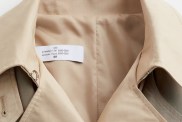On July 25, 1965, after a tour of London, Bob Dylan turned up at the Newport Folk Festival wearing a polka dot shirt, slim, fitted trousers, Cuban heeled boots with pointed toes, and a pair of dark sunglasses. A strong summer wind gusted through the crowd. When Dylan plugged in his electric guitar and launched into a blistering rendition of “Maggie’s Farm,” the folkies were scandalized by the entire scene. Dylan had a whole new sound and a wardrobe to go with it. The festival goers showered their icon with a hail of boo’s. Many fans that had come to hear their Bobby Dylan strum an acoustic guitar and sing songs of freedom, could not reconcile this new, shocking version of their idol with the man they thought they knew. After all, if he was a star, he was their star first – wasn’t he?

Raised in a middle class Jewish home in Hibbing, Minnesota, Robert Zimmerman attended the University of Minnesota where he began performing folk tunes at local coffee shops under the pseudonym Bob Dylan. However, Minnesota was too small to contain him, and after his freshman year in 1961, he struck out for New York City to meet his idol, Woody Guthrie, who was dying of Huntington’s disease. Not only did the young Dylan meet Guthrie, but he became what he would term “his greatest disciple.” In New York, he quickly insinuated himself into the burgeoning Greenwich Village folk scene, began writing and performing. For a time, he was a minor character with a small following.
But before the year was out he had received a favorable review of his performance at Gerde’s Folk City on West 4th Street, and was signed to Columbia Records by A&R man John Hammond. Dylan quickly went to work in the studio, and his debut, Bob Dylan, was released in March, 1962 – the same year he legally changed his name. The album was comprised almost entirely of traditional folk and blues mainstays. And although he could count Johnny Cash as a fan, his first album sold only a few thousand copies.

However, Dylan did not sit idle. He wrote at a furious pace, and by 1963 he had penned several of the best protest songs the world has ever heard. One of these, “Blowin’ in the Wind,” appeared on his second album, The Freewheelin’ Bob Dylan. Thanks in part to a successful pop rendition of the tune by Peter, Paul, and Mary, not to mention a well publicized romantic and professional relationship with folk singer Joan Baez, Dylan was launched into the greater public eye. By 1964, having recorded another instant classic, “The Times they are a-Changin’”. He had not only ascended to the top of the folk world, he had effectively established himself as the most important songwriter of the 1960’s. And just as he had left his hometown, and later the small folk circuit attached to his university, it was not long before the scrawny golden son of the Greenwich Village folk scene found himself at odds with his erstwhile fans and their well-meaning yet rigid adherence to entrenched musical traditions.
Photographs taken during 1961-1963 show Dylan dressed like a folkie, wearing simple blue jeans and flannel work shirts, occasionally donning an engineer’s cap. He was consciously cultivating a personal style. And his persona during this time was Bob Dylan, folk musician. But just as Dylan would not be constrained by any one style of music, his style of dress was destined to expand.


To be continued…





